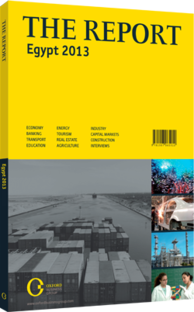OBG talks to G Steven Farris, CEO, Apache Corporation

Interview: Steven Farris
In your view, what is the current state of investor confidence in Egypt’s oil and gas sector?
STEVEN FARRIS: Clearly, the events over the last two years have taken a toll on the country’s investment attractiveness. However, according to the Multilateral Investment Guarantee Agency, a member of the World Bank Group, the oil and gas sector represents 25% of Egypt’s fiscal revenues, and accounts for nearly 70% of foreign direct investment.
We have a long history of working constructively with the Egyptian General Petroleum Corporation and the Ministry of Petroleum, and we invest approximately $1bn per year. We have not missed a day of production in the previous two years, and we believe that Egypt understands the value of these types of contributions, especially at a time when other sectors of the economy are underperforming.
There are two things that the country needs in the oil and gas industry, and those are technology and international capital, both of which foreign producers are currently able to provide.
How would you assess the overall efficiency of Egypt’s petroleum regulations and practices?
FARRIS: Right now, I would say business flow is close to normal. In 2012, Apache Corporation, for instance, received approval for about 20 development leases, which enables our joint-venture companies to bring new fields on production, up from six in 2011. There have been two bid rounds and no fundamental change in the terms of the production-sharing contracts.
What are the greatest challenges to increasing upstream production?
FARRIS: Using a number of advanced seismic techniques, we have been very successful at finding oil and gas in Egypt’s Western Desert. However, while we have found some large discoveries, including Qasr, Hydra, Jade and several oil sources in the Faghur Basin, Egypt’s oil basins are not as extensive as those of Libya, for example. That in turn puts a premium on drilling wells, so producers can locate reserves and bring them on production in a cost-effective manner. As a result, there is significant scope for a number of drilling and production technologies in Egypt, including pattern water floods, hydraulic fracturing and horizontal drilling. In fact, these methods are already being used in the US.
To what extent is there scope for increased output or new discoveries in the Western Desert?
FARRIS: There has been a lot of success testing deeper horizons across our acreage, bringing on production from several new formations. In 2013, we expect to drill 270 wells including over 60 exploration wells.
We have transferred horizontal drilling technology in conventional formations from our US operations to the Western Desert, which has helped to prove the value of these new techniques to our Egyptian partners. There are plans to increase our activity in this area during the course of 2013. We have not yet tested unconventional formations, but we are evaluating the best candidates and believe that this technology will be successful in the Western Desert.
In what way have subsidy distortions negatively affected the upstream sector?
FARRIS: While we certainly produce a significant amount of gas for domestic consumption, roughly 60% of our production on a British-thermal-unit basis is oil and condensate. At current commodity prices, oil and condensate are in fact considerably more valuable than natural gas.
We do recognise that the subsidies issue is an important economic challenge for Egypt, as it is for many other countries around the world. In Egypt, however, the supply of natural gas is declining, and there is a growing drain on state revenues. This is obviously an issue that the authorities will have to deal with in order to bring the economy back in balance.
You have reached the limit of premium articles you can view for free.
Choose from the options below to purchase print or digital editions of our Reports. You can also purchase a website subscription giving you unlimited access to all of our Reports online for 12 months.
If you have already purchased this Report or have a website subscription, please login to continue.

